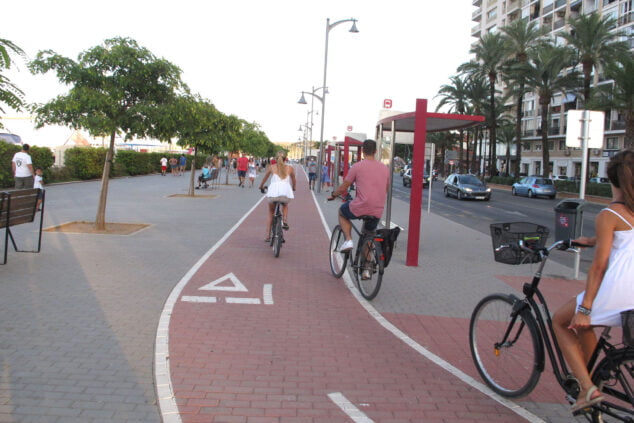In Dénia, 2 out of 3 trips by car are "unjustified"
This noon, the Councilor for Citizen Security and Mobility, Javier Scotto, has presented the roadmap in six years from the City Council of Dénia on non-motorized mobility. This will be approved this afternoon during the ordinary plenary session in September.
The idea, with this new plan, is to promote travel both by bicycle and in other types of non-motorized vehicles, which, as Scotto points out, are good for the health, the environment, coexistence and the habitability of a city.
In this transversal project, in which different areas of the council have participated, as well as the Local Police, a multitude of analyzes have been carried out to understand the reality of Dianense mobility. A hopeless reality, which still prioritizes the car when it is not necessary.
Although it is true that most of the residents choose to go on foot through Dénia (based on data obtained in the last decade), 38% still bet on the car, and only 1% on the bicycle (and that the 80% of the population has a bicycle, according to the study). In fact, as confirmed by the strategy data, the majority of trips by car are "unjustified", as defined by the councilor himself. These are trips within the municipality of less than 10 minutes that are made with motor vehicles with, in addition, a low occupation inside.
This is what the new strategy tries to tackle with a series of actions to maintain data on mobility on foot, lower data on the use of motor vehicles, and increase data on the use of bicycles and personal mobility vehicles as much as possible.
Concrete measures
The Cyclist Mobility Strategy in Dénia 2021-2027 includes, as its main action, the creation and expansion in three phases of areas of speed moderation and incorporation of cyclists, the so-called 20/30 zones, starting with the most central part of the urban area, the one between the port and the avenues of Alicante and Patricio Ferrándiz and the Ronda de les Muralles.
It also includes the widening of sidewalks, the change of the parking system from battery to cordon in some streets and also the elimination of cycle lanes “which have proven to be dangerous, such as cycle lanes, or conflictive, such as those that share a sidewalk with pedestrians. ”.
